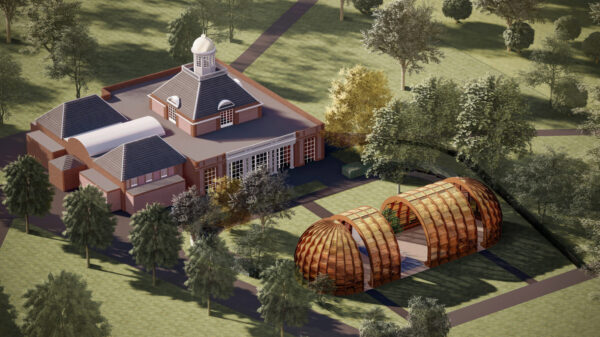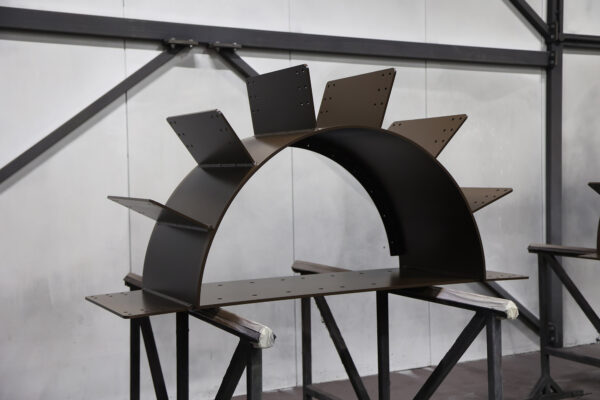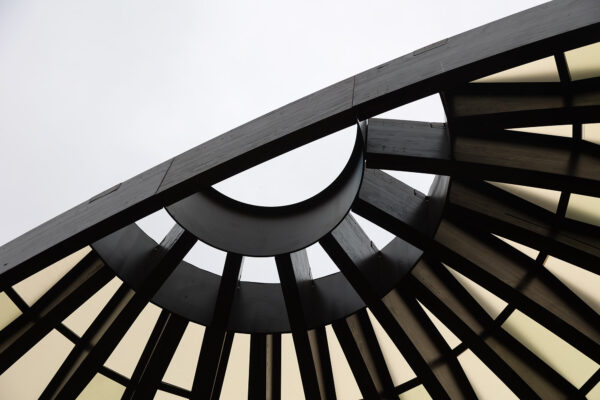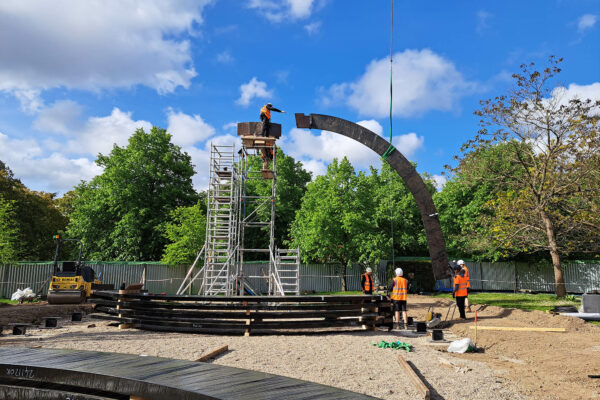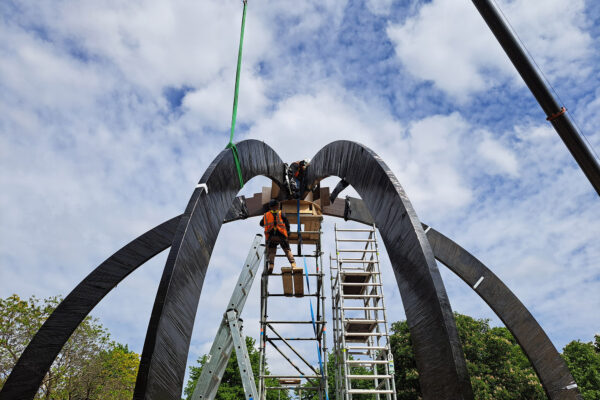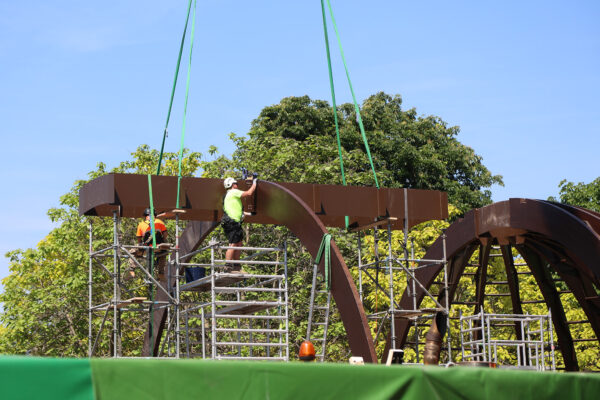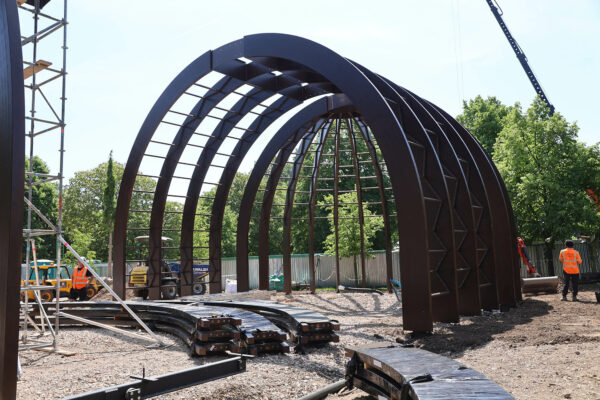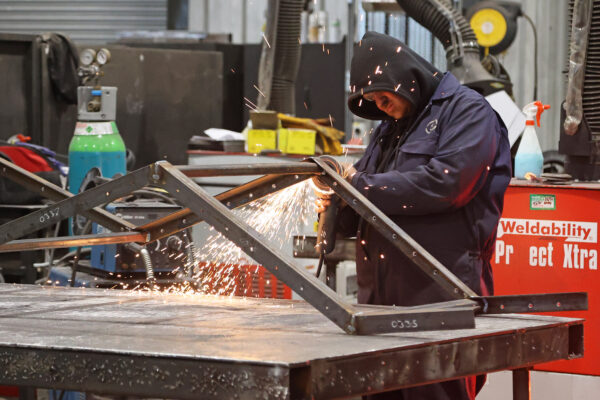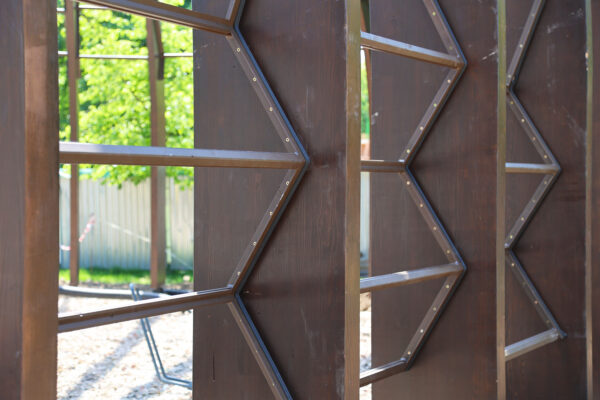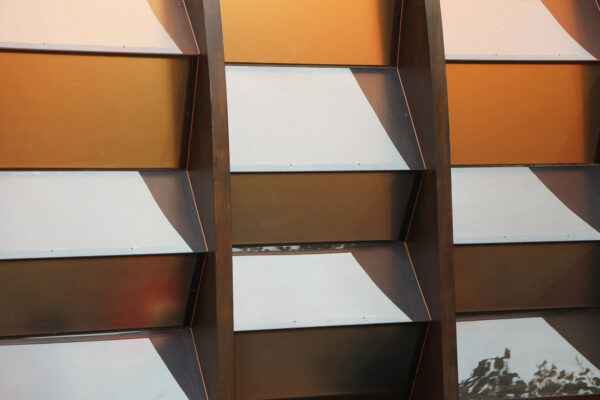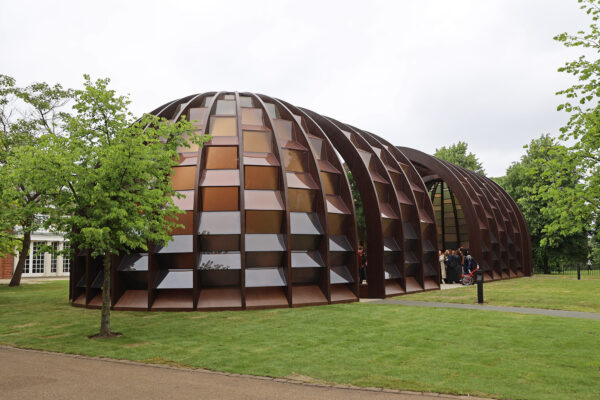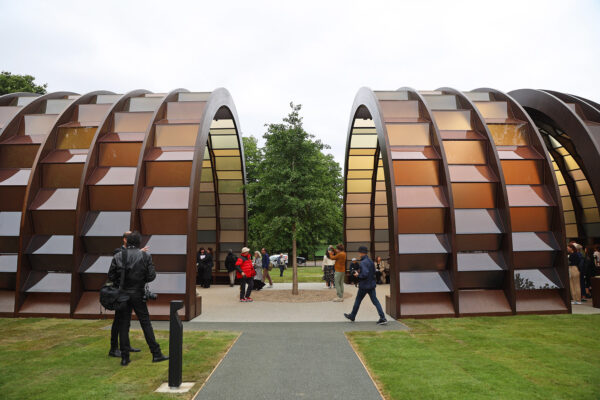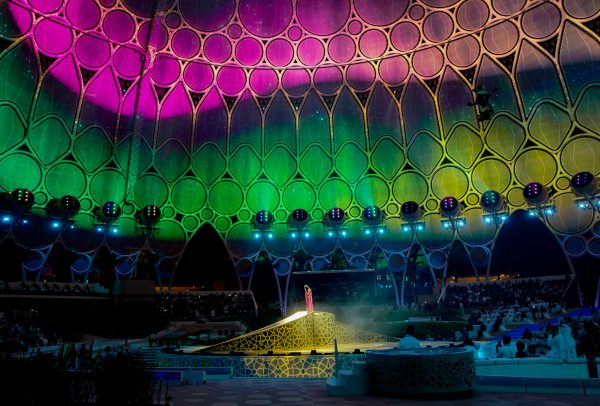The annual commission of the Serpentine Pavilion is an internationally respected event in the architectural calendar. This year’s Pavilion, A Capsule in Time designed by architect Marina Tabassum and her firm Marina Tabassum Architects (MTA), is the sixteenth we have delivered.
The Pavilion is a timber structure consisting of four modules presented in an elongated form, designed around a Gingko tree at its heart. The structure is 11 metres wide, 31 metres long and 8.2 metres high. Each main structural glulam timber beam is 100mm wide and 600mm deep.
More than 600 polycarbonate panels have been installed between the timbers, secured by bespoke frames fabricated in our metal shop. Their angular positioning is both a contradiction and a complement to the delicately curved form of the whole structure.
The polycarbonate panels have been applied with a translucent film, an assortment of five colours play with the light as it changes throughout the day, each panel angled to a minimum of seven degrees to ensure rain run-off in wet weather.
A central keystone defines the two end sections of the structure. Each is a staggered two-ring centre fabricated with metal fishplates, first suspended mid-air by scaffolding, their design allows sufficient access for the fitting of the timbers once lifted into position by crane and fixed by our team.
Of the two centre modules, one is kinetic, mounted upon a concealed track that provides hydraulically actuated movement left and right, allowing this centre section to butt against the end section to provide a larger water-tight footprint at the north end of the Pavilion.
Whilst architects are invited to design a Pavilion that has many functions, it was Marina Tabassum’s desire that the Pavilion be re-purposed as a library; consequently, its inner perimeter features timber units that provide seating and shelving for this intention.
“The strong form combined with the kinetic dimension make this a very special pavilion. Its design is striking and deliberate and has been a joy to work on.” Tim Leigh, Chief Creative Officer
See the history of the Serpentine Pavilions here
